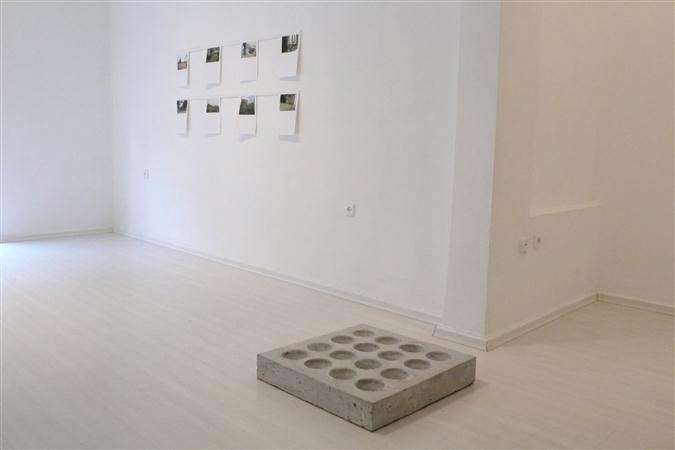Reference
Asaf Elbocher, Assaf Evron, Keren Gueller, Shira Tabachnik, Daphna Westerman
6.12.2012 – 5.1.2013 Binyamin Gallery, Tel Aviv
The word “text” comes from the Latin “textum,” woven cloth, presenting writing as the weaving of words to create meaning. Many artistic creations develop from dealing and/or having a dialogue with written texts. The exhibition Reference also evolved from this affinity and follows the wanderings of the artist and his creations from within and towards an existing text.
Lexical semantics dealing with the spoken word ascribes the center of gravity to textual origins – to anchor (the thesis) / to rely (on the text) / to be based on (a hypothesis). It is evident that such a reference is meant to supply stability, a base on which new ideas, still being formed, can rest. The mobility that develops during work with the text occurs in the space between what already exists (cloth) and what is being done (weaving), seemingly from contradictory directions, though in reality complementary: inward and outward – in order to leave the text you need first to be submerged in it; up and down – the idea must be anchored in order to be able to embark from it; and forward and backward – to sail to new provinces but remember the starting point. An interesting relationship is formed between the freedom to work as if in one’s own reference, and responsibility for the correct contextual interpretation – a relation involving seemingly contrasting tension between creativity and preparation for creation.
The situation of the artist who creates under the influence of existing sources, external to him or her, is like different images of a dam: first collecting water, symbolizing a state of learning, thinking deeply in a small defined territory; a dam newly opening its gates, symbolizing the intellectual turning point, the enriching path built from meeting with the text; a flooded dam, symbolizing the danger in sitting too long and being filled to over-flowing, capacity; and so resulting in the loss of personal expression.
The poet Ezra Pound wrote about his attempts to write Haiku: “The ‘one image poem’ is a form of super-position, that is to say it is one idea set on top of another …. In a poem of this sort one is trying to record the precise instant when a thing outward and objective transforms itself, or darts into a thing inward and subjective.” [1] This exhibition presents diverse modes of this same transformation or darting of the “outward,” here the textual source, to within the “inward,” the personal meaning the artist expresses from his or her vision. The works in the exhibition are a kind of super-position. The artistic idea is set on top of the wording of the other, and brought anew to the gallery space.
[1] From his article “Vorticism” in The Fortnightly Review 571 (Sept. 1, 1914): 465-67.
